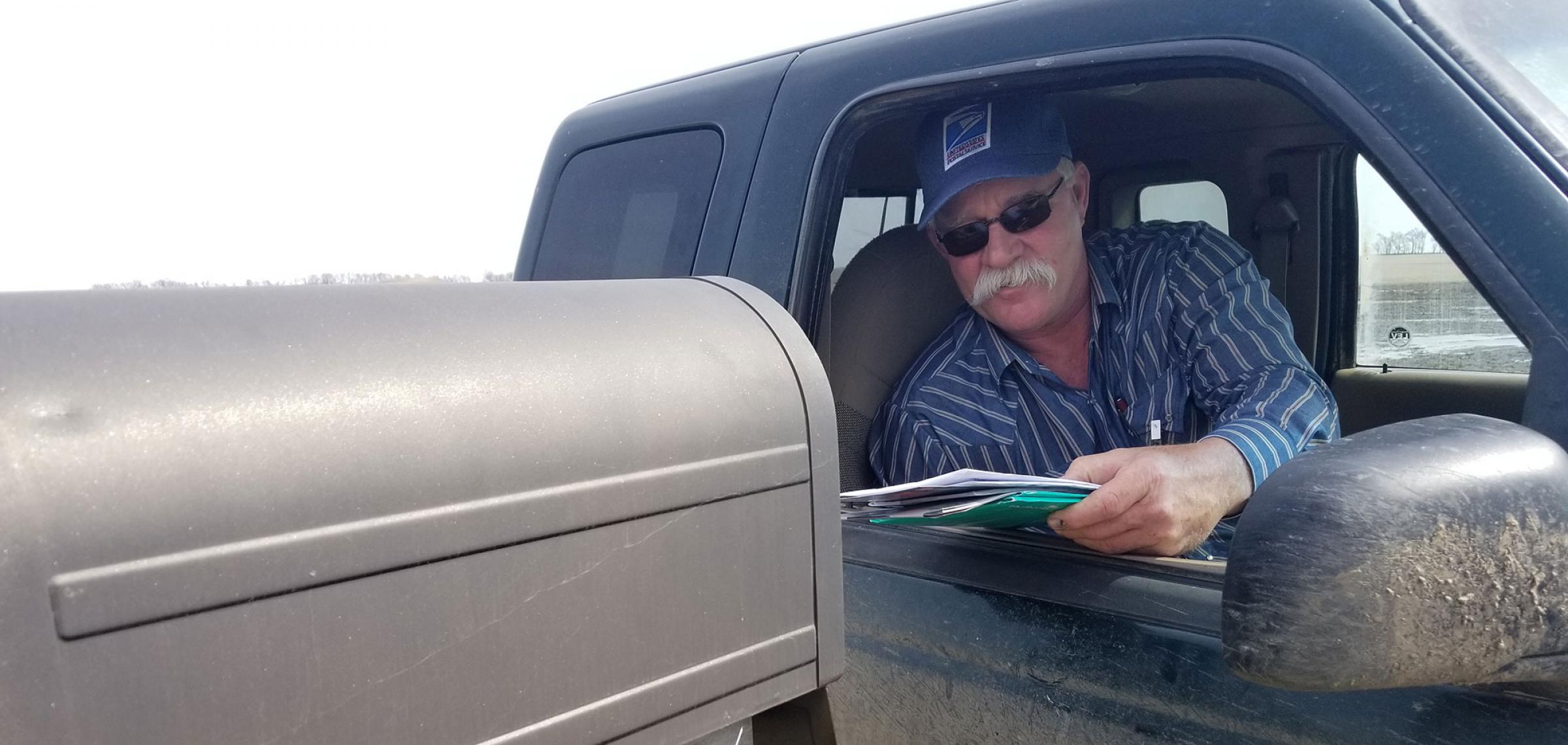
Delivering Wildlife Data
“The rural letter carriers of North Dakota have completed the April survey of upland game. Covering more than 40,000 miles the letter carriers furnish the State Game and Fish Department with a wealth of information on game conditions in every part of the state … In addition to the actual counts of birds requested, most of the rural letter carriers add letters and comments, which are greatly appreciated.”
While those 60-plus words were published in North Dakota OUTDOORS more than 70 years ago, they remain relevant today as rural mail carriers continue to collect observation data for the Game and Fish Department on several furbearer and upland game bird species.
Stephanie Tucker, Department game management section leader, said the rural mail carriers collect data for Game and Fish four times per year.
“Essentially, we’re asking them to simply record the number of live animals they see while they’re delivering mail,” Tucker said. “And they do this statewide for three mornings in a row.”
Rural mail carriers across the state have volunteered their time to Game and Fish for decades (not all participate), providing valuable insight into North Dakota’s wildlife from the front seat over thousands of miles of dusty backroads.
Jeff Trzpuc, a rural mail carrier from Kathryn who travels about 115 miles per day, has delivered mail for more than 20 years and has participated in the surveys since the day he started. If it wanders near North Dakota’s backroads, Trzpuc has likely encountered it.
“Pheasants, squirrels, skunks, coyotes, weasel, mink, muskrats … I like watching the wildlife anyway, so I might as well count what I see while I’m delivering the mail,” Trzpuc said.
Tucker said the data collected would be impossible to come by without the help of the mail carriers, and it’s all done as part of normal routes, so there is no additional costs to the U.S. Postal Service.
“They collect great, amazing data for us on a statewide scale that logistically, or fiscally, we just wouldn’t be able to get otherwise,” she said. “We just don’t have the money or staff to do this level of a survey and collect this kind of great information.”
Tucker said the observation data provides good trend indices, alerting wildlife biologists to the ups and downs of animal populations.
“For furbearer species like coyotes and fox, for instance, we’ve done research to show that the survey data collected by rural mail carriers is very good data,” Tucker said, “and in some cases, it’s the only data we get for some furbearer species on a statewide level.”
During any given year, rural mail carriers participating in the surveys are doing so on anywhere from 80 to 115 daily mail routes. That means anywhere between 35,000 to 45,000 miles are covered during a survey period.
“The data the mail carriers provide is, once again, valuable, and their long-time cooperation with the Game and Fish Department doesn’t go unnoticed,” Tucker said.
